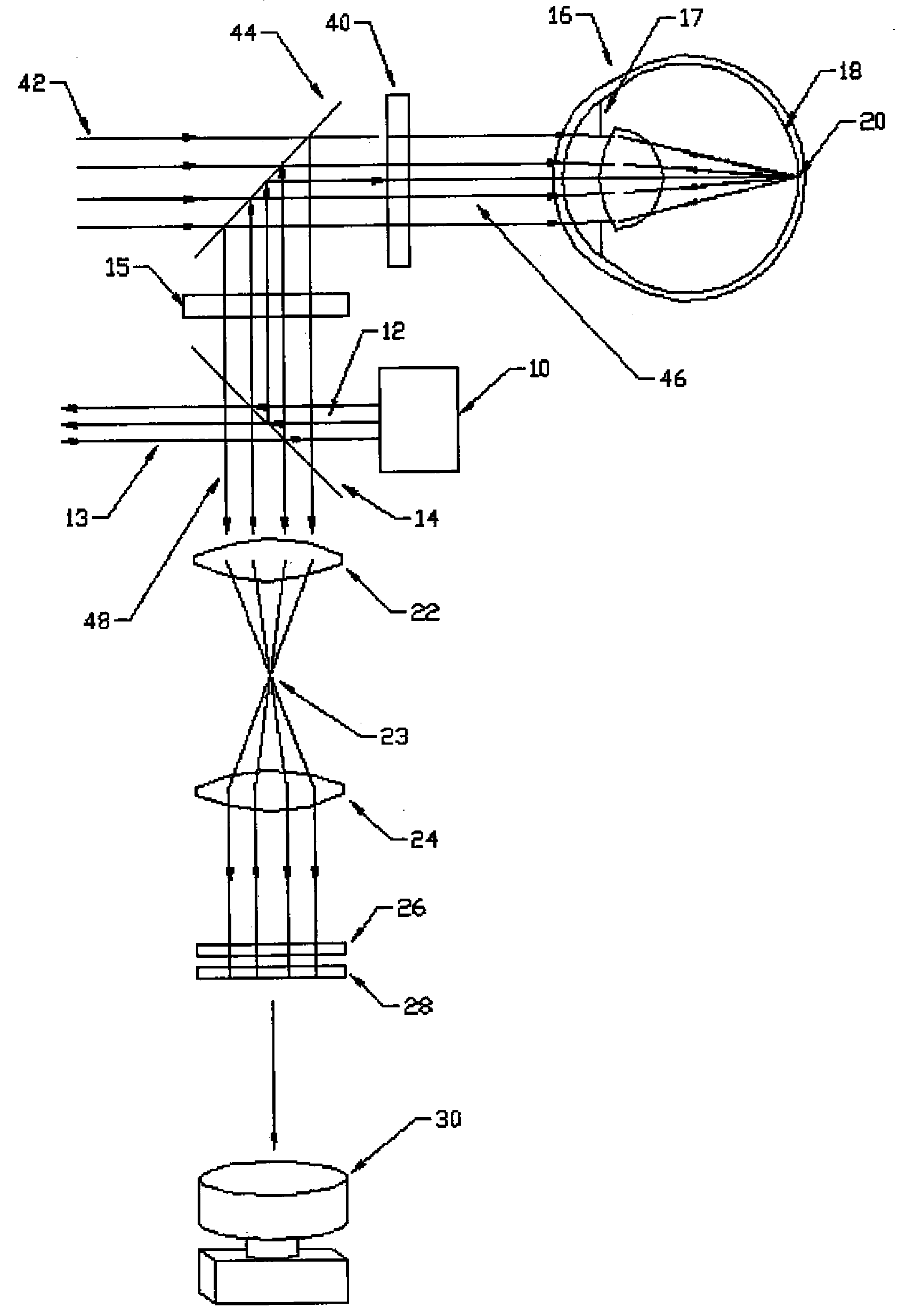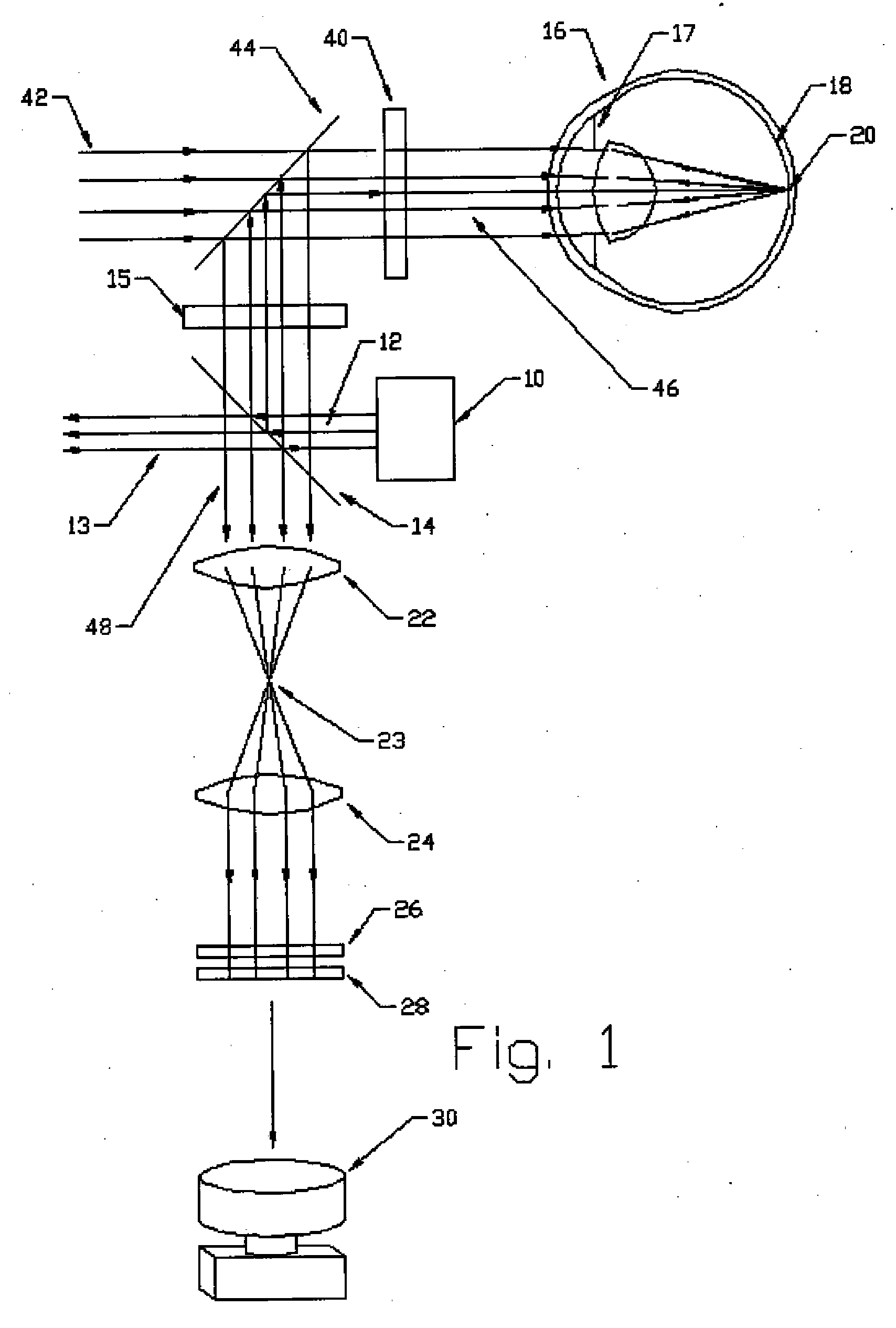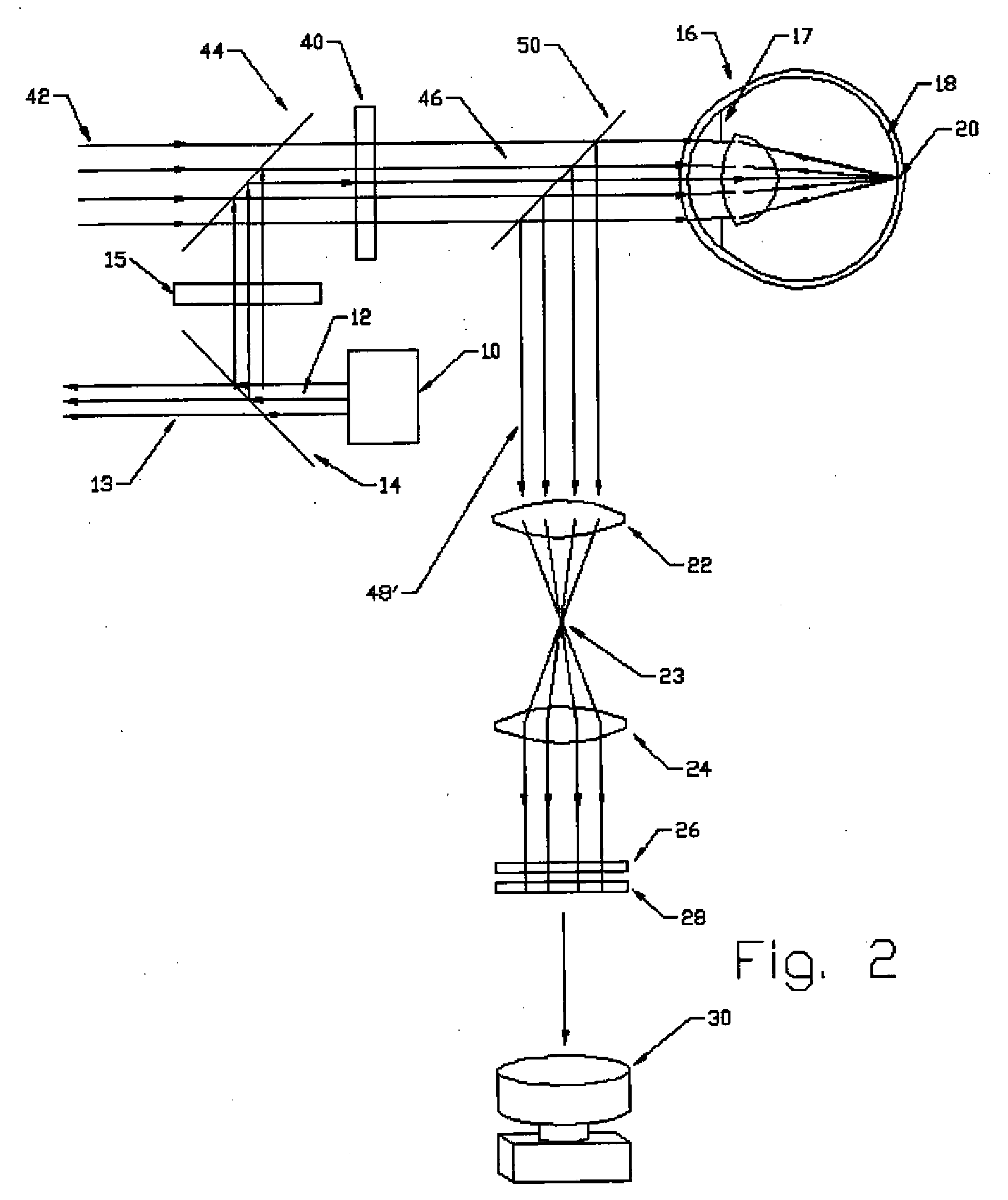Interactive refractor incorporating wavefront sensing and adaptive optics
- Summary
- Abstract
- Description
- Claims
- Application Information
AI Technical Summary
Benefits of technology
Problems solved by technology
Method used
Image
Examples
Embodiment Construction
[0026]FIG. 1 is a schematic illustration of an interactive refractor system according to a preferred embodiment. The interactive refractor system includes a light source 10, such as a laser generator, for directing a broad, collimated light beam 12 toward a beam splitter 14. The light source 10 preferably generates a light beam 12 having a wavelength of 500 to 1000 nm, more preferably 700 to 800 nm, more preferably 770 to 790 nm. The diameter or cross-sectional area of the beam is preferably at least as large as the area of the surface of the eye to be measured. For example, if the refractive properties of the central 3 mm diameter of the eye are to be measured, then the beam should be at least 3 mm in diameter, and be incident upon the 3 mm diameter of the eye.
[0027] At approximately 780 nm, the light beam 12 is virtually invisible (other than a small, central spot) to the human eye, which provides for optimal analysis, since the eye does not react to the entering light. If visibl...
PUM
 Login to View More
Login to View More Abstract
Description
Claims
Application Information
 Login to View More
Login to View More - R&D
- Intellectual Property
- Life Sciences
- Materials
- Tech Scout
- Unparalleled Data Quality
- Higher Quality Content
- 60% Fewer Hallucinations
Browse by: Latest US Patents, China's latest patents, Technical Efficacy Thesaurus, Application Domain, Technology Topic, Popular Technical Reports.
© 2025 PatSnap. All rights reserved.Legal|Privacy policy|Modern Slavery Act Transparency Statement|Sitemap|About US| Contact US: help@patsnap.com



